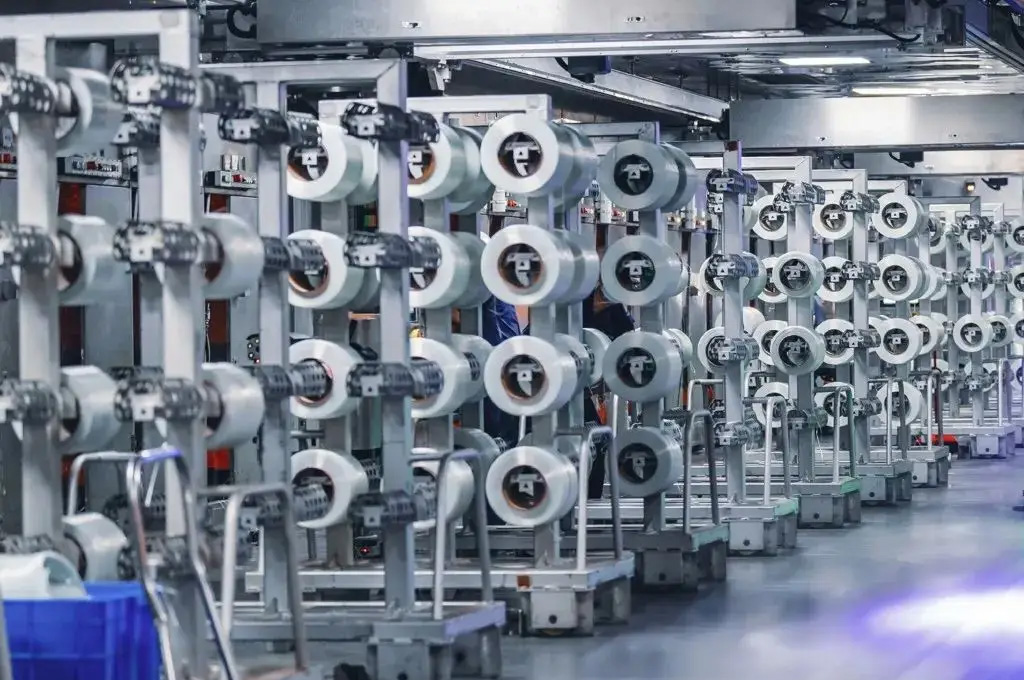1. Characteristics of Pure Oxygen Combustion Technology
In electronic-grade glass fiber production, pure oxygen combustion technology involves using oxygen with a purity of at least 90% as the oxidizer, mixed proportionally with fuels such as natural gas or liquefied petroleum gas (LPG) for combustion. Research on pure oxygen combustion in glass fiber tank furnaces shows that for every 1% increase in oxygen concentration in the oxidizer, the flame temperature of natural gas combustion rises by 70°C, heat transfer efficiency improves by 12%, and the combustion rate in pure oxygen becomes 10.7 times faster than in air. Compared to traditional air combustion, pure oxygen combustion offers advantages such as higher flame temperatures, faster heat transfer, improved combustion efficiency, and reduced exhaust emissions, demonstrating its exceptional energy-saving and environmental performance. This technology not only enhances product quality and production efficiency but also significantly reduces energy consumption and environmental pollution, making it a critical enabler of green manufacturing.
In practical production, natural gas and oxygen are delivered to the tank furnace workshop after meeting specific process requirements. Following filtration and pressure regulation, they are distributed to burners on both sides of the furnace according to combustion process needs. Within the burners, the gases mix and combust fully. The gas flow rate is interlocked with temperature control points in the furnace’s flame space. When temperatures fluctuate, precision flow control valves automatically adjust the gas supply to each burner while proportionally regulating oxygen flow to ensure complete combustion. To guarantee safe, stable gas supply and combustion integrity, the system must include key components such as flow meters, pressure-regulating valves, rapid shut-off valves, precision flow control valves, and parameter transmitters.
2. Enhanced Combustion Efficiency and Reduced Energy Consumption
Traditional air combustion relies on the 21% oxygen content in air, while the remaining 78% nitrogen reacts with oxygen at high temperatures, generating harmful nitrogen oxides (e.g., NO and NO₂) and wasting heat. In contrast, pure oxygen combustion minimizes nitrogen content, drastically reducing flue gas volume, particulate emissions, and heat loss from exhaust. The higher oxygen concentration enables more complete fuel combustion, resulting in darker (higher emissivity) flames, faster flame propagation, elevated temperatures, and enhanced radiative heat transfer to the glass melt. Consequently, pure oxygen combustion significantly improves fuel efficiency, accelerates glass melting rates, reduces fuel consumption, and lowers energy costs.
3. Improved Product Quality
In electronic-grade glass fiber production, pure oxygen combustion provides a stable, uniform high-temperature environment for melting and forming processes, enhancing the quality and consistency of glass fibers. Reduced flue gas volume shifts the furnace’s flame space hotspot toward the feeding port, accelerating raw material melting. The flame wavelength generated by pure oxygen combustion aligns closer to blue light, offering superior penetration into electronic-grade glass. This creates a smaller temperature gradient along the tank depth, improving melting rates, enhancing glass melt clarification and homogenization, and ultimately boosting both output and product quality.
4. Reduced Pollutant Emissions
By replacing nitrogen-rich air with nearly pure oxygen, pure oxygen combustion achieves more complete combustion, significantly reducing harmful emissions such as carbon monoxide (CO) and nitrogen oxides (NOₓ). Additionally, impurities like sulfur in fuels are less likely to react with nitrogen in oxygen-rich environments, further curbing pollutant generation. This technology reduces particulate emissions by approximately 80% and sulfur dioxide (SO₂) emissions by about 30%. Promoting pure oxygen combustion not only mitigates greenhouse gas emissions but also lowers risks of acid rain and photochemical smog, underscoring its critical role in environmental protection.
By integrating pure oxygen combustion technology, the electronic-grade glass fiber industry achieves substantial energy savings, higher product quality, and reduced environmental impact, aligning with global sustainability goals.
Post time: May-13-2025






